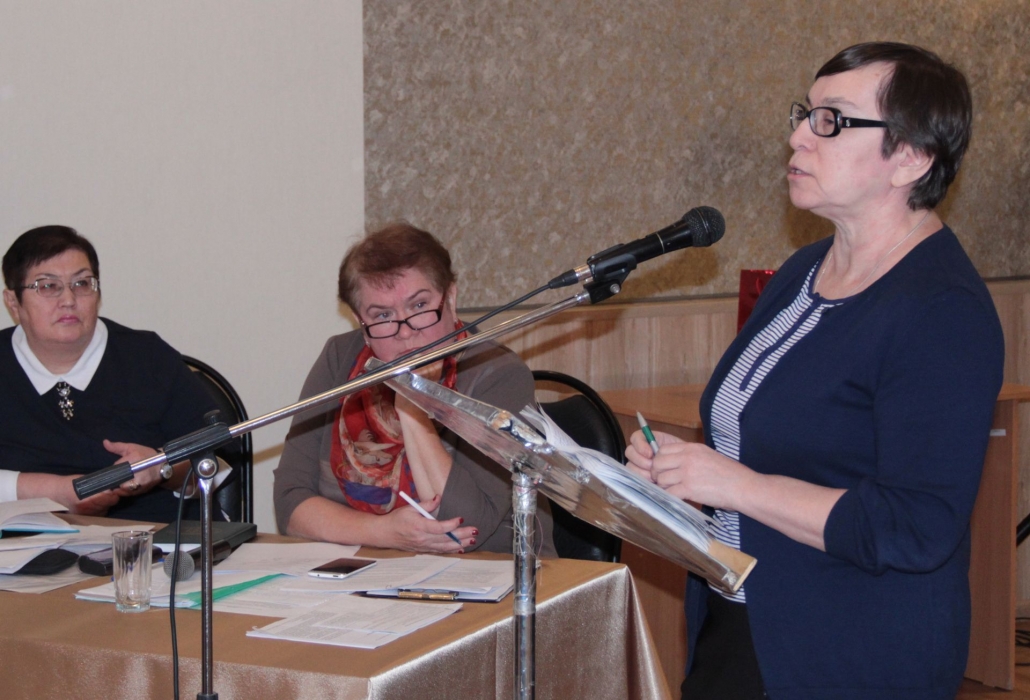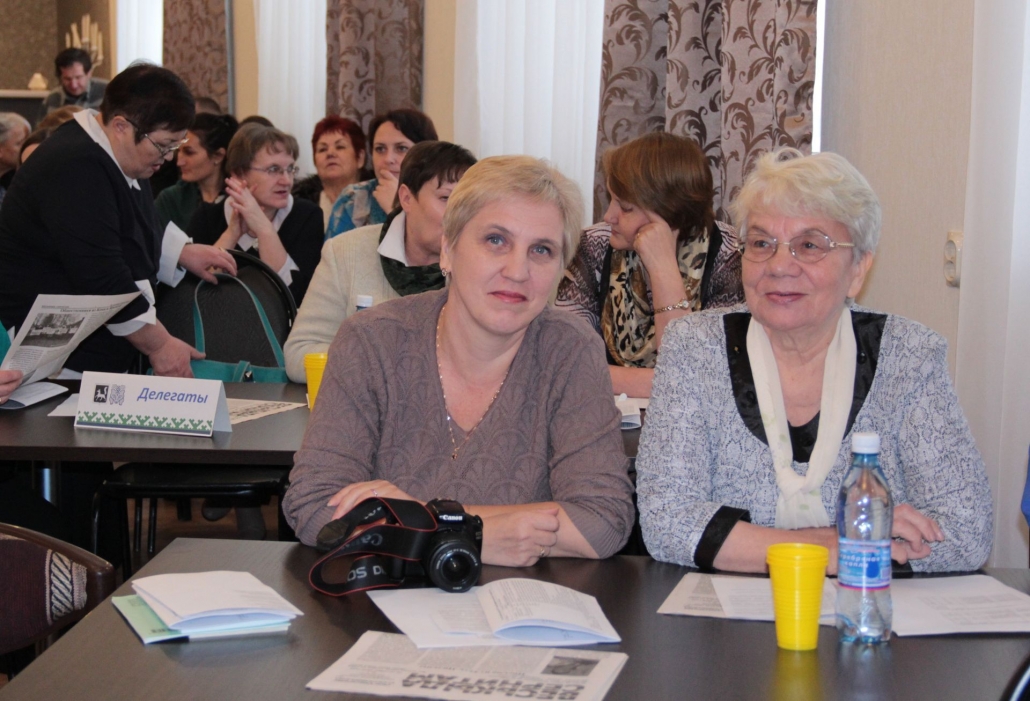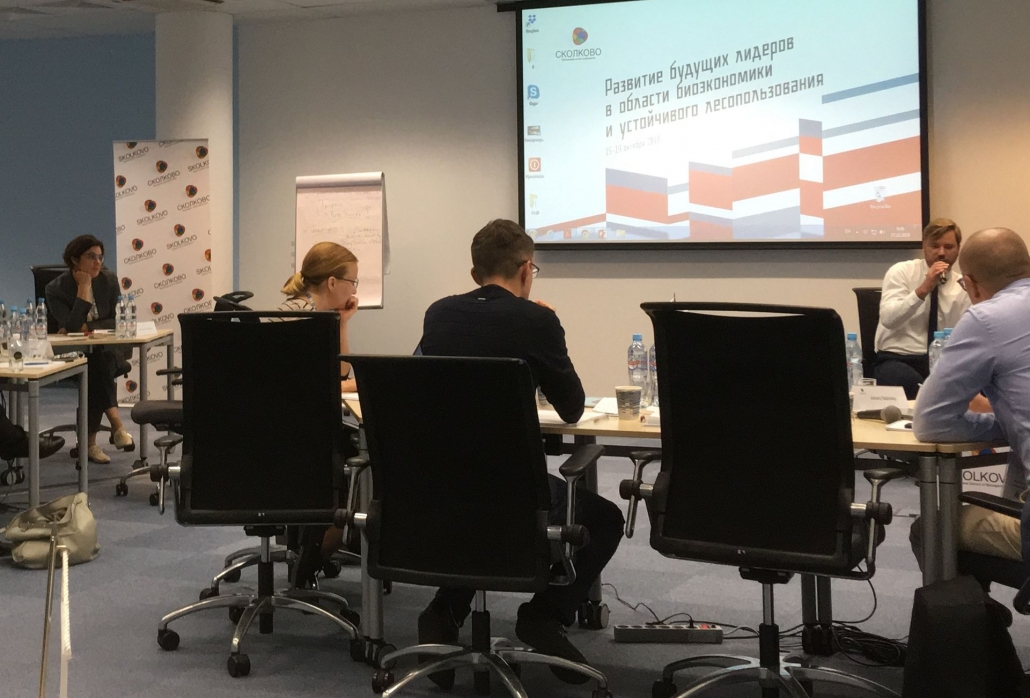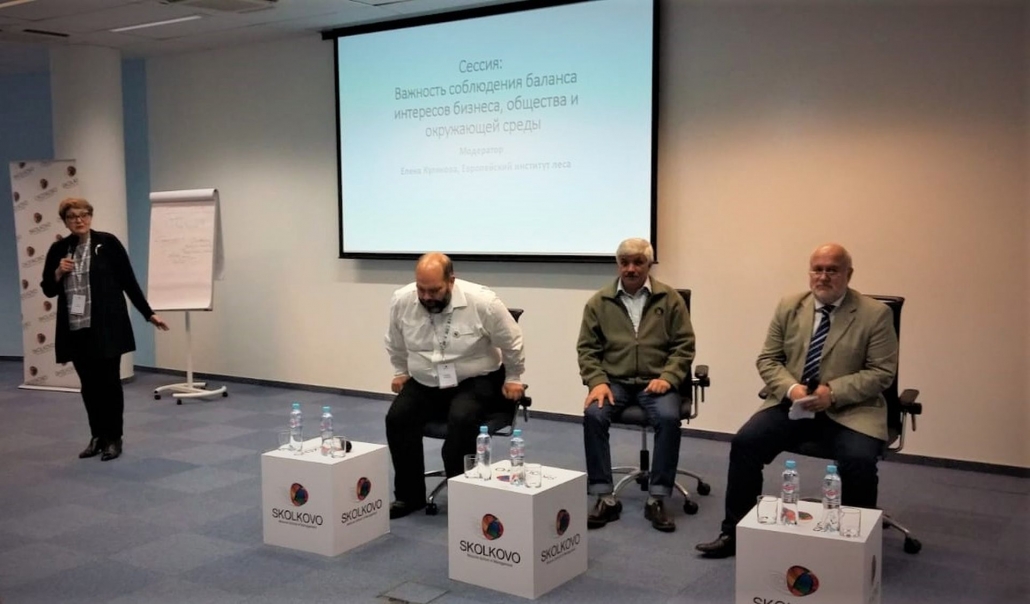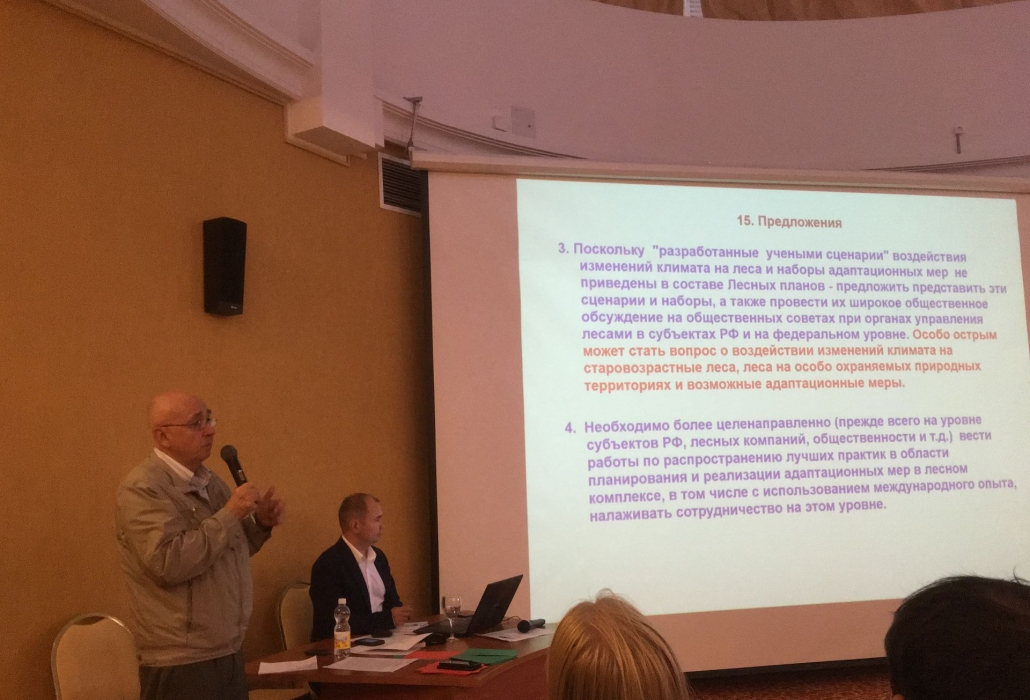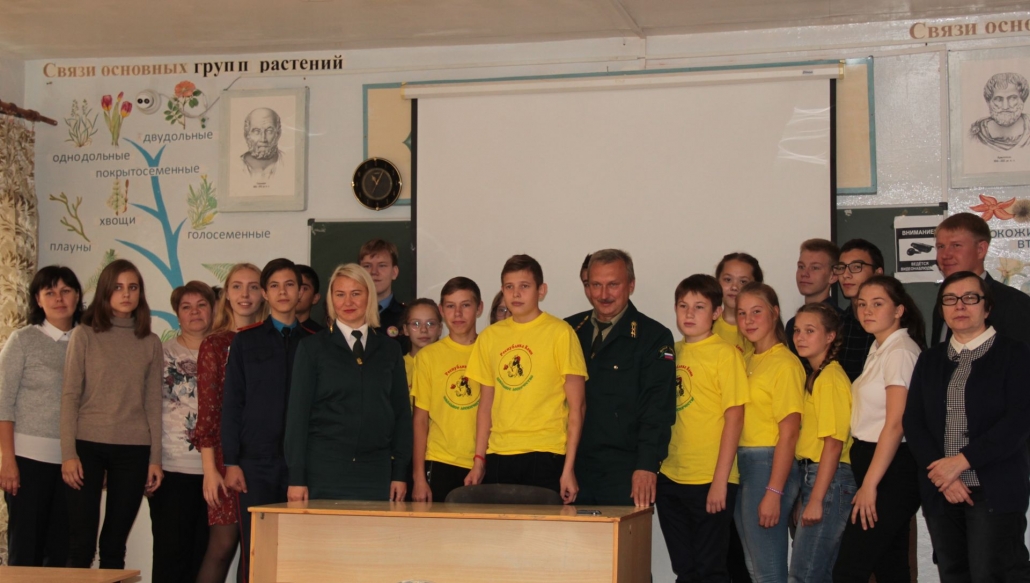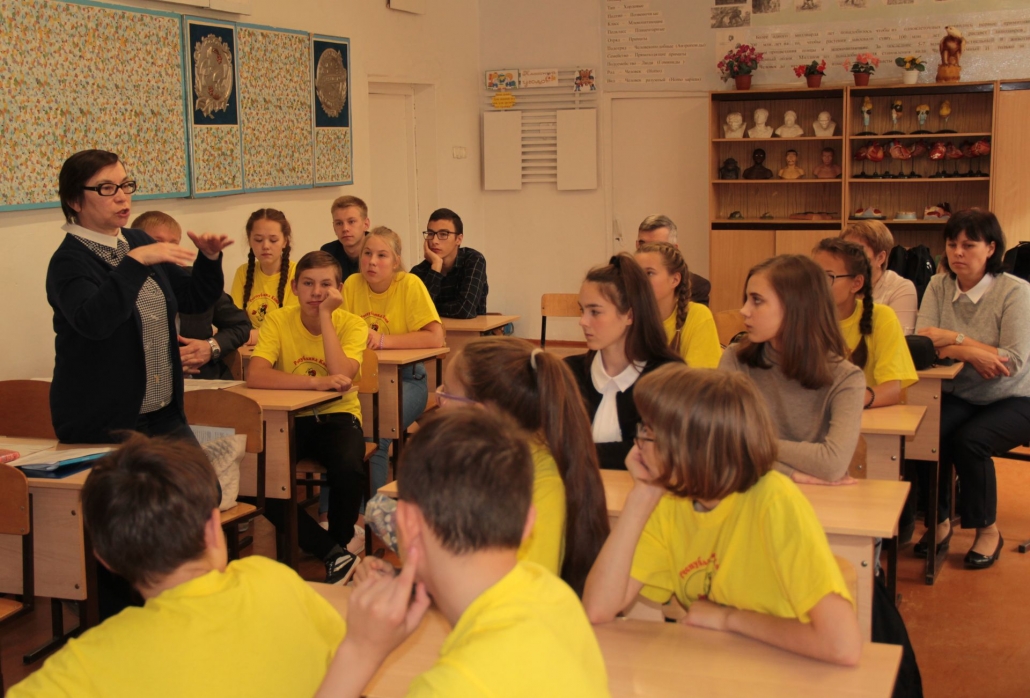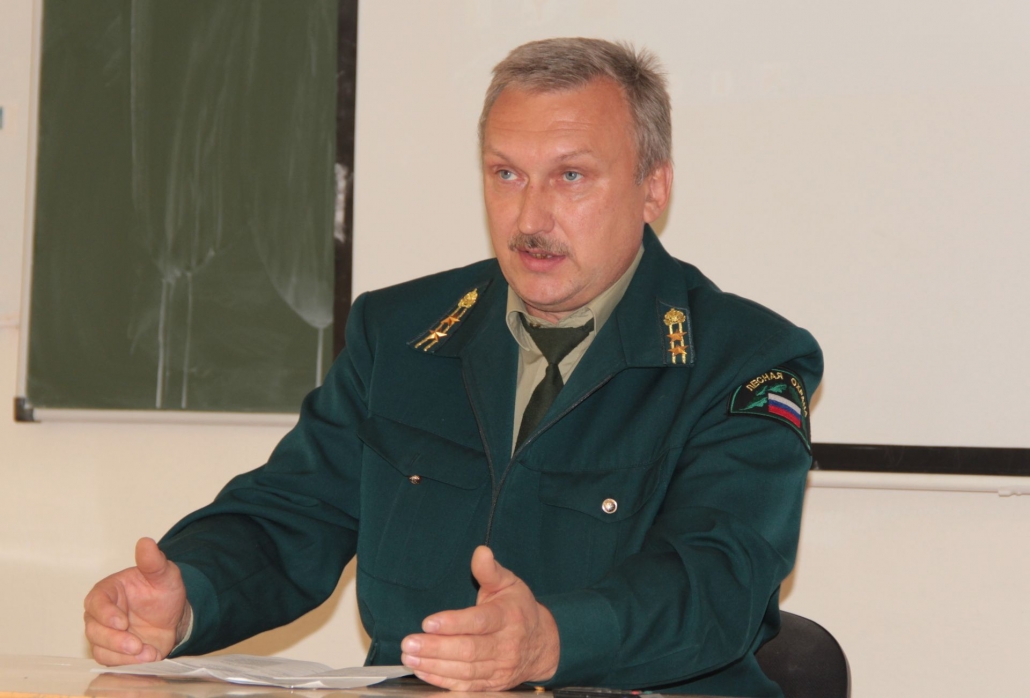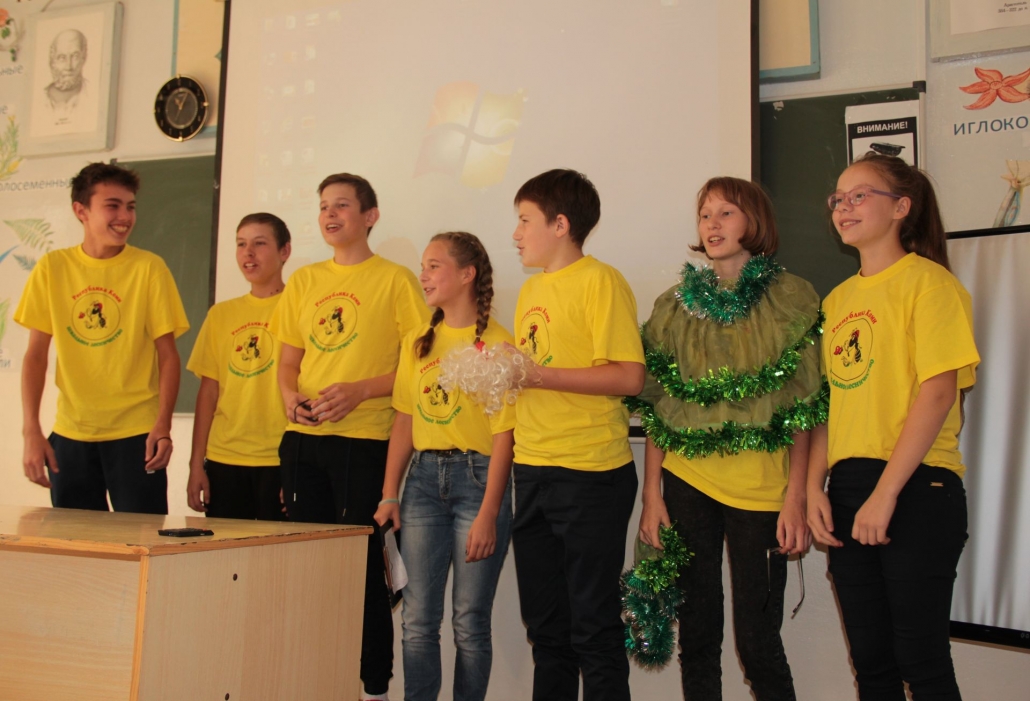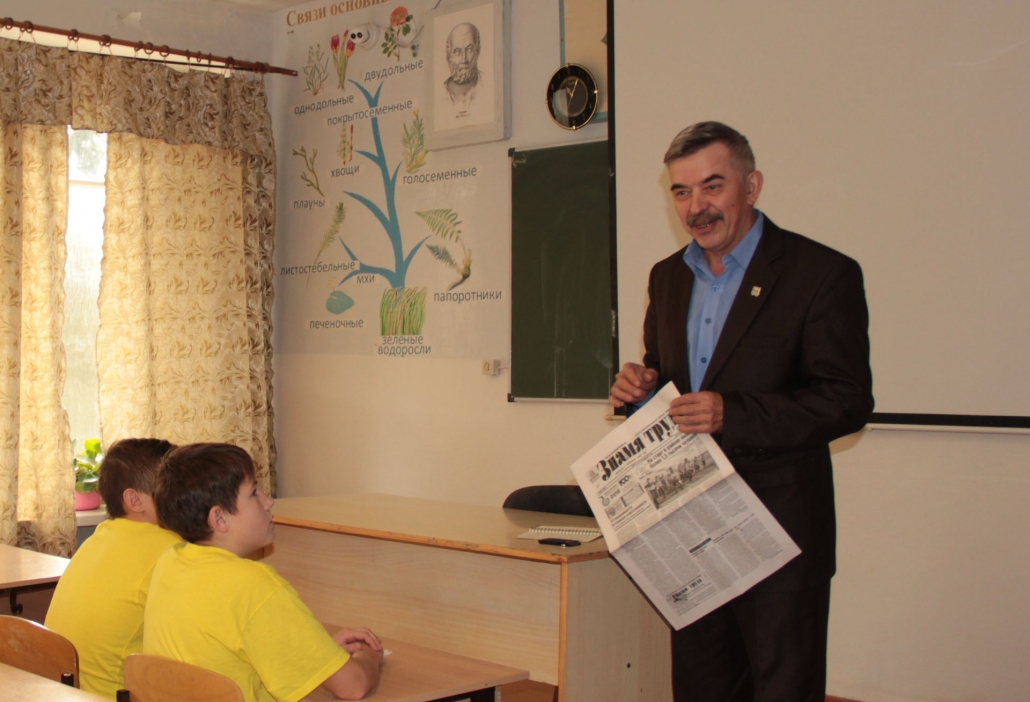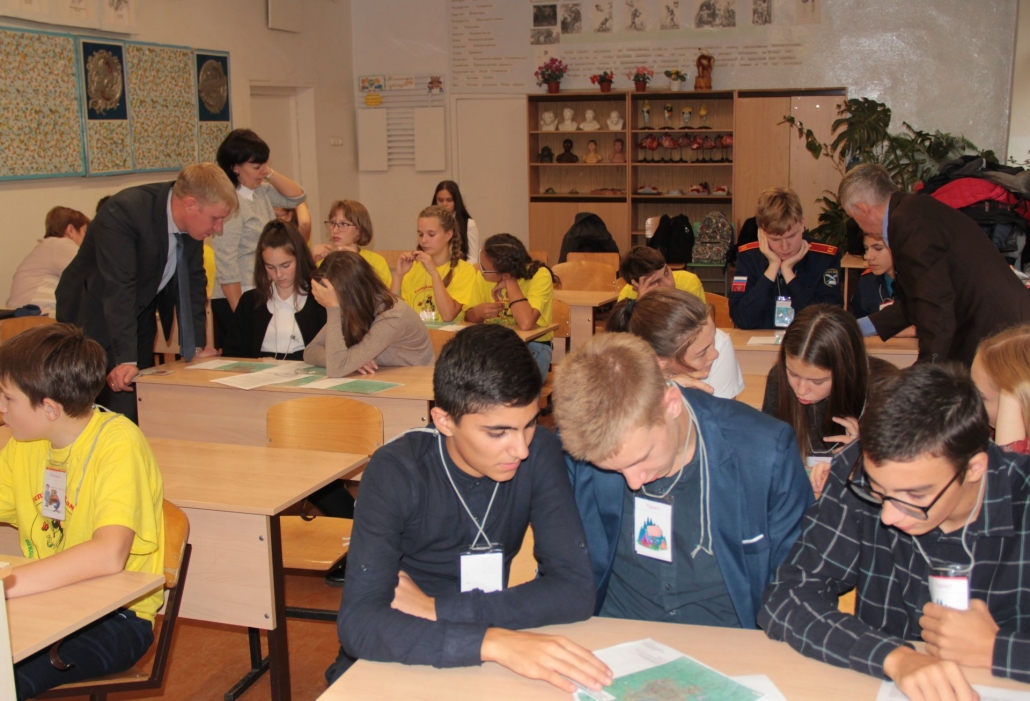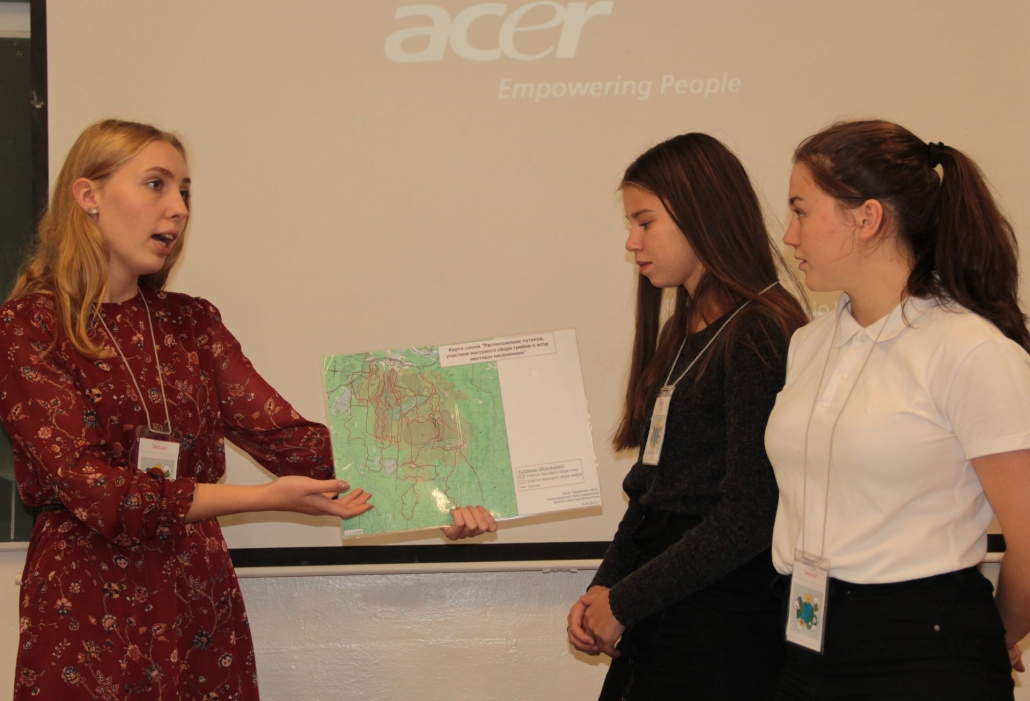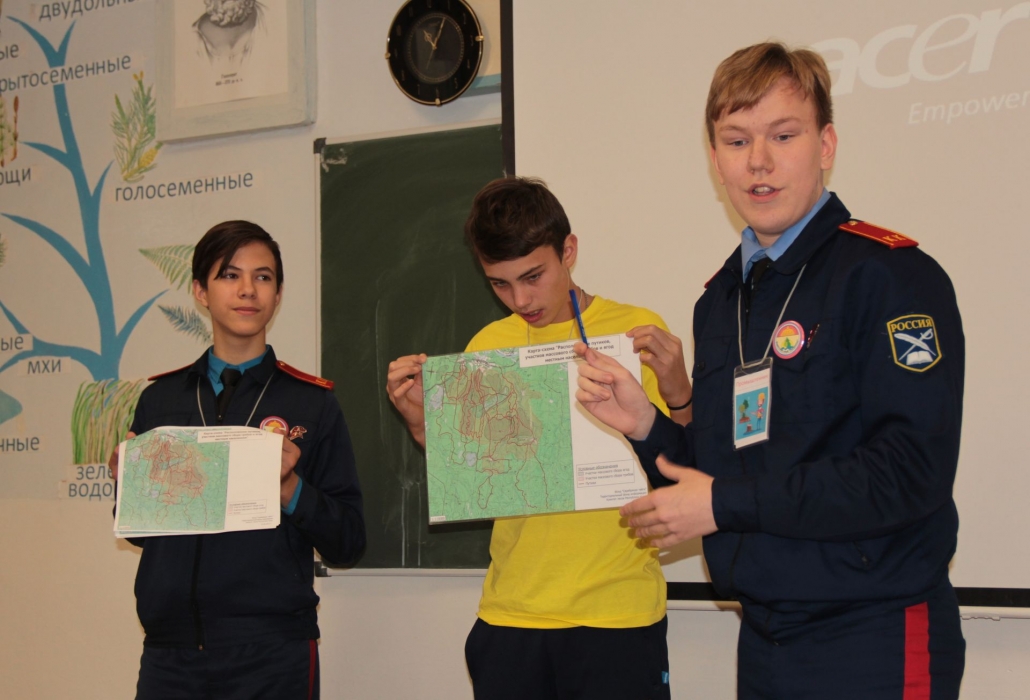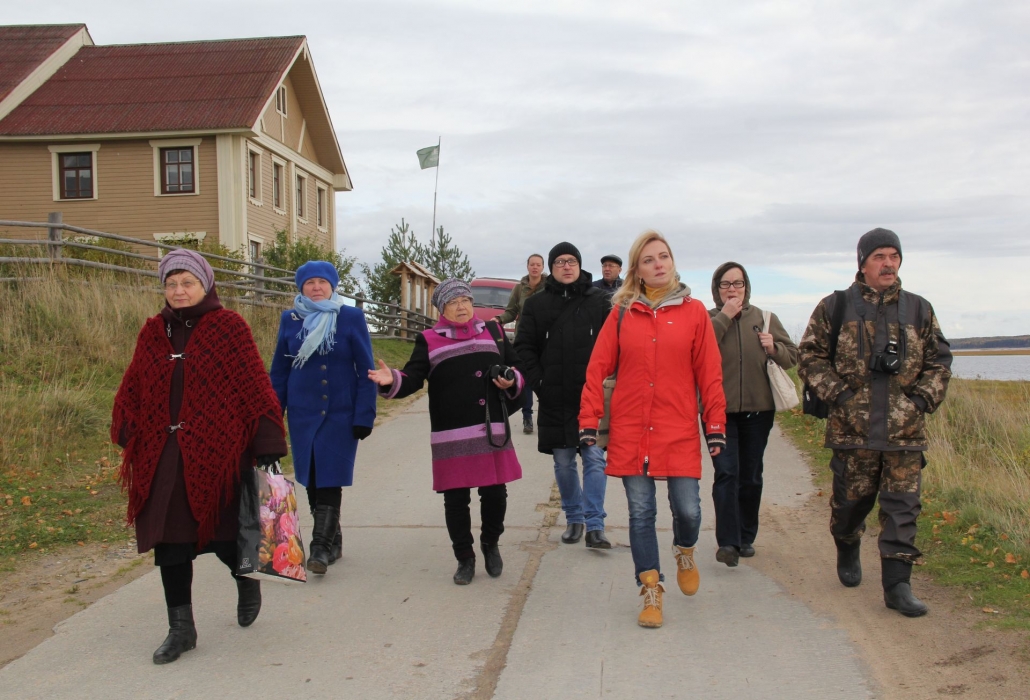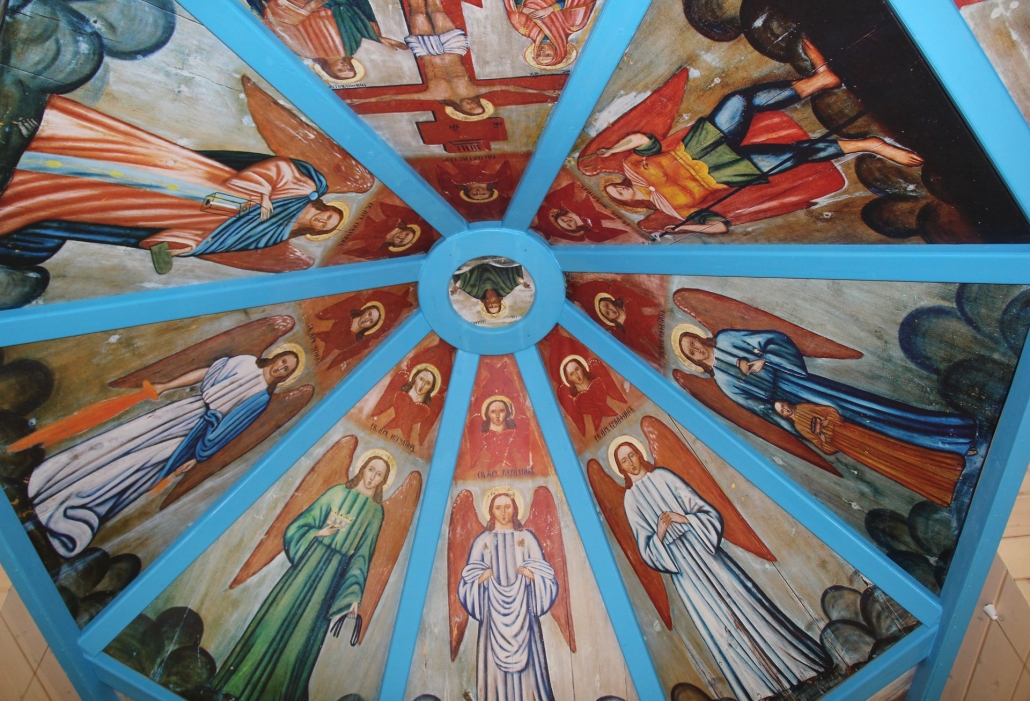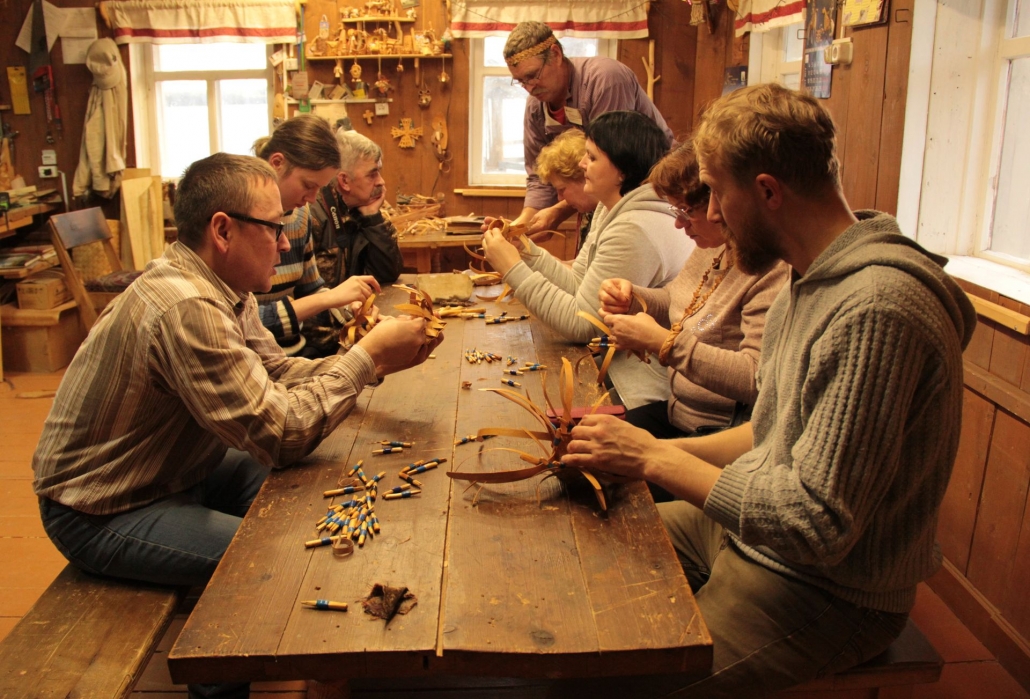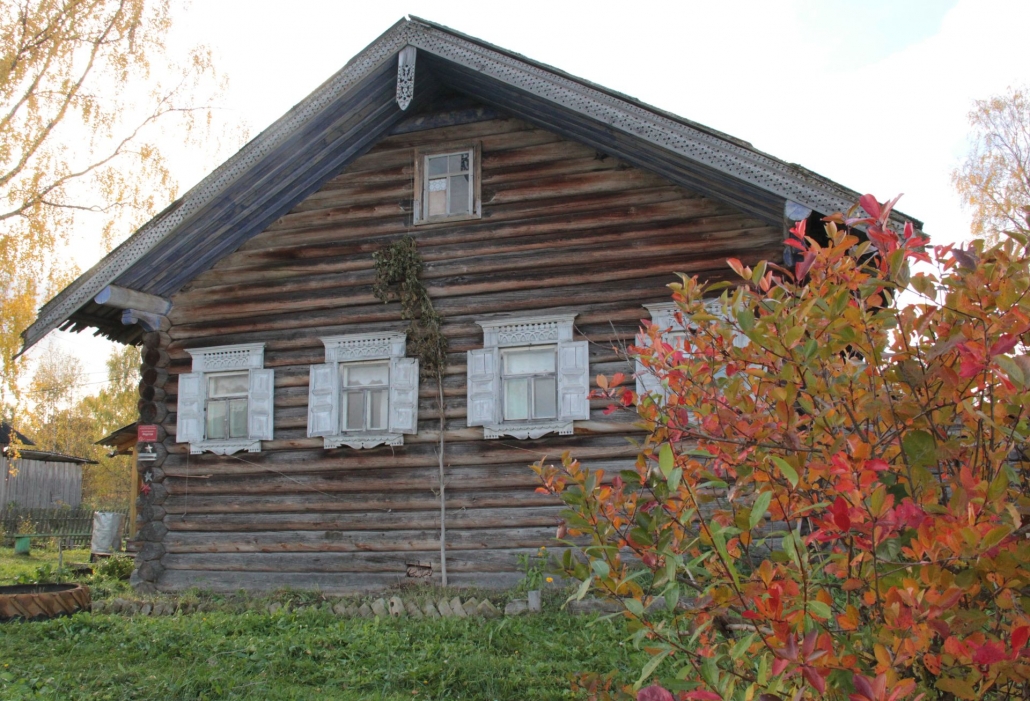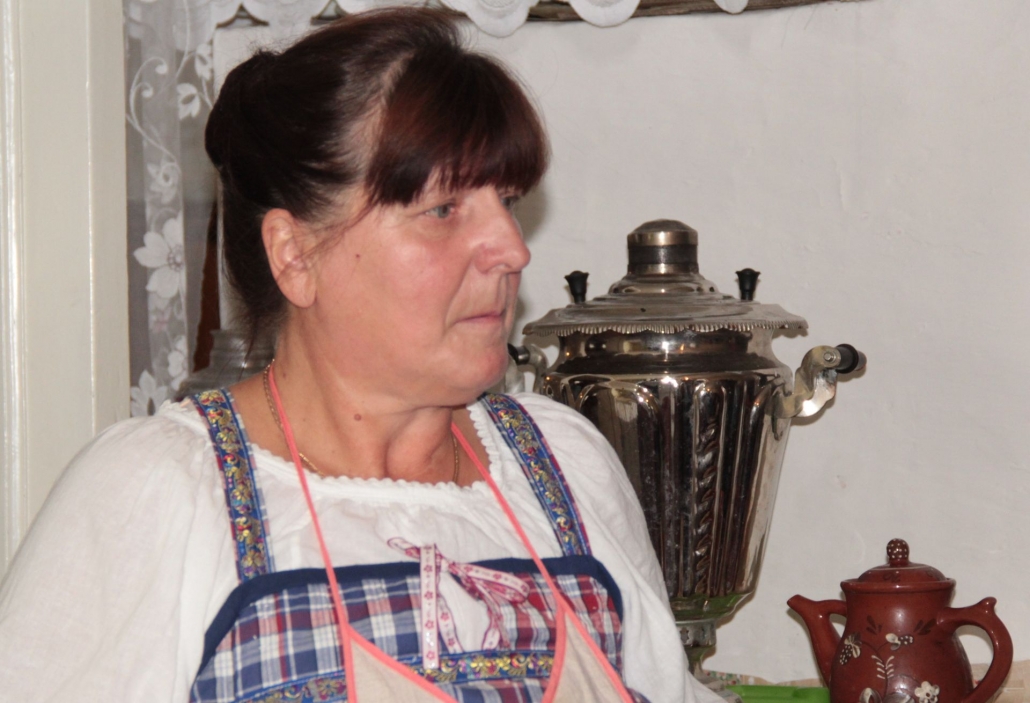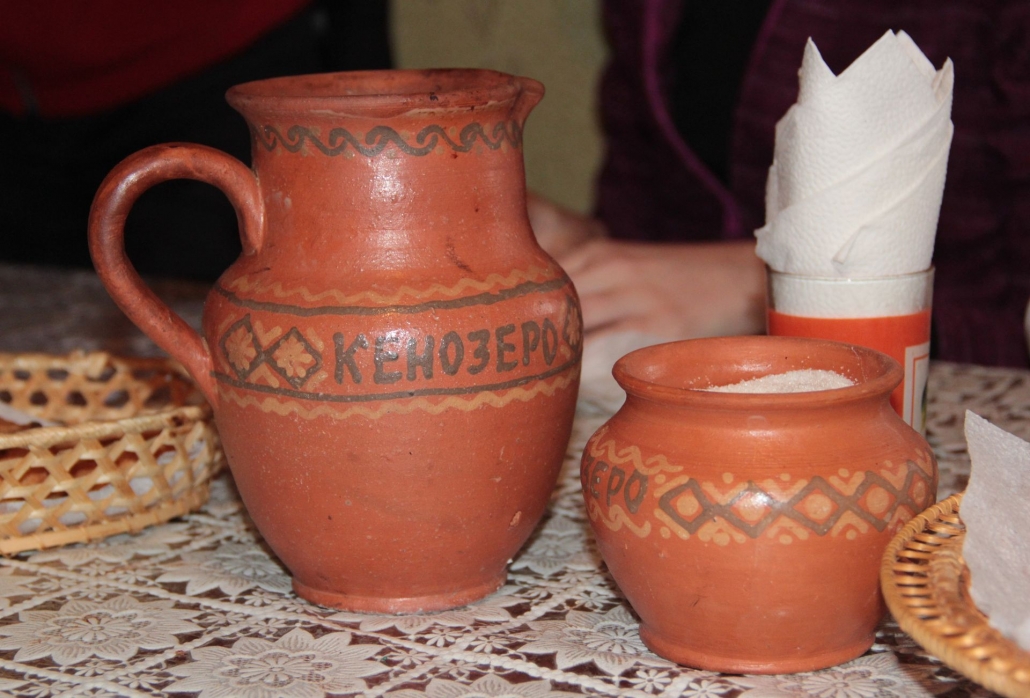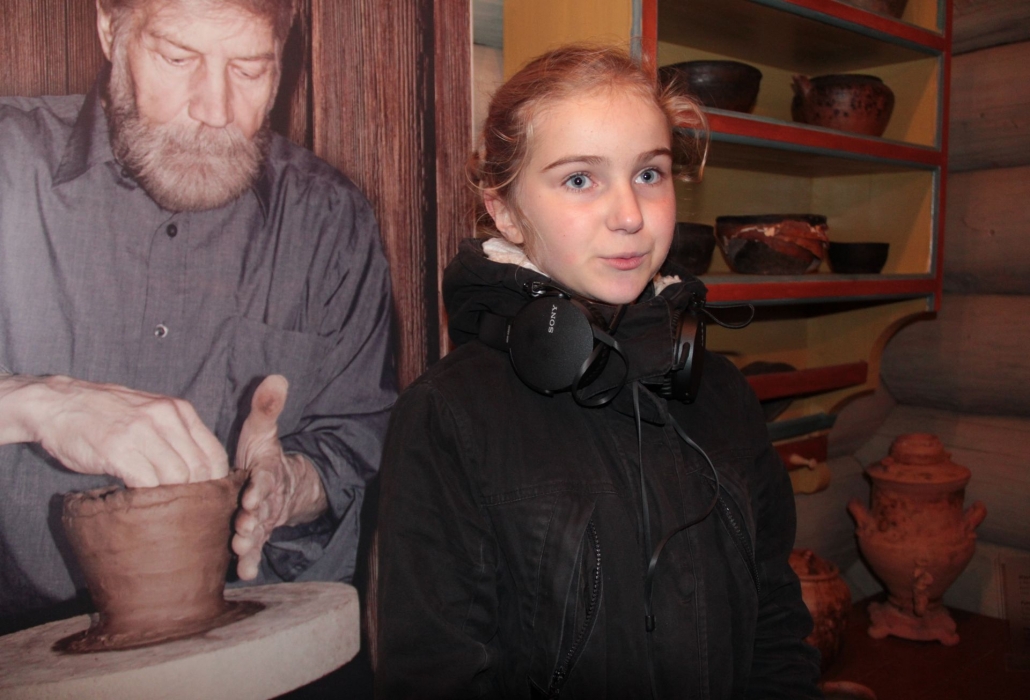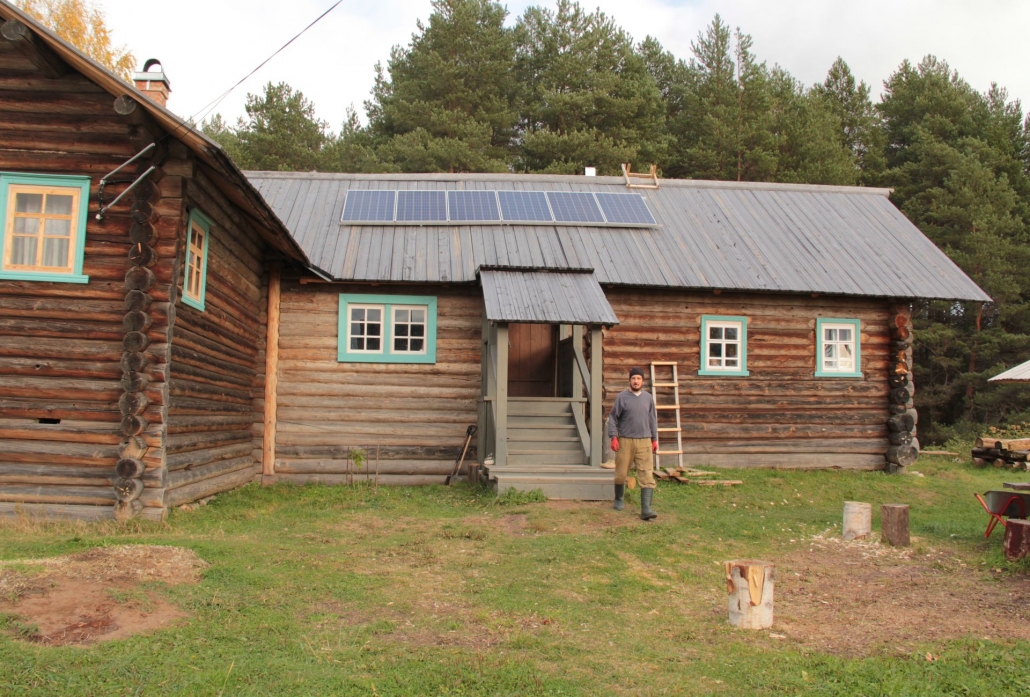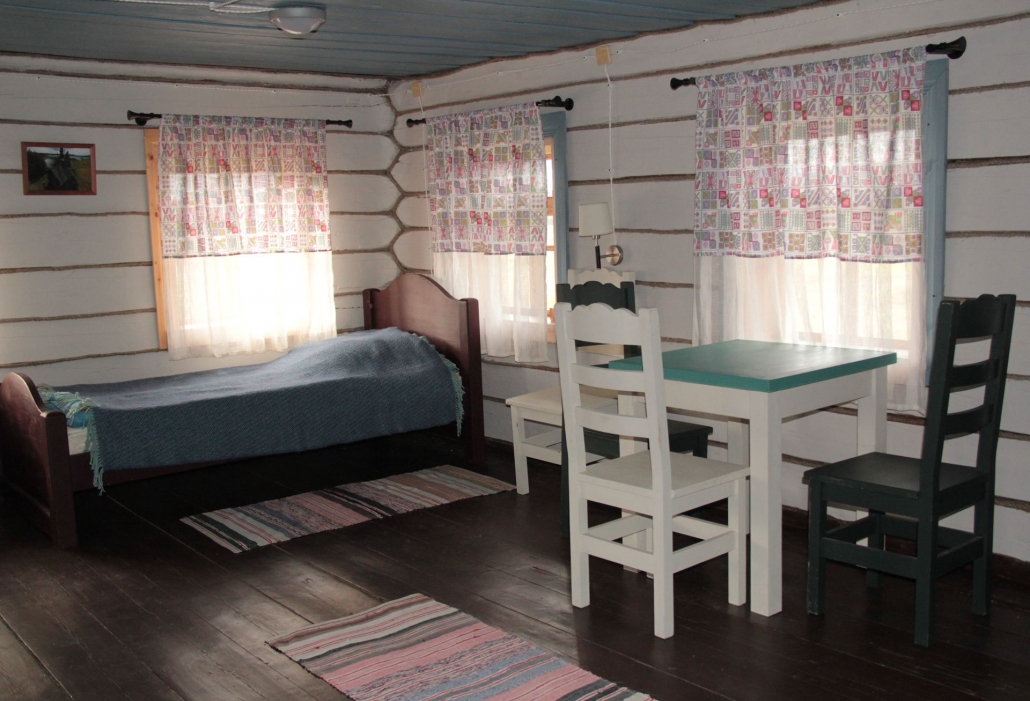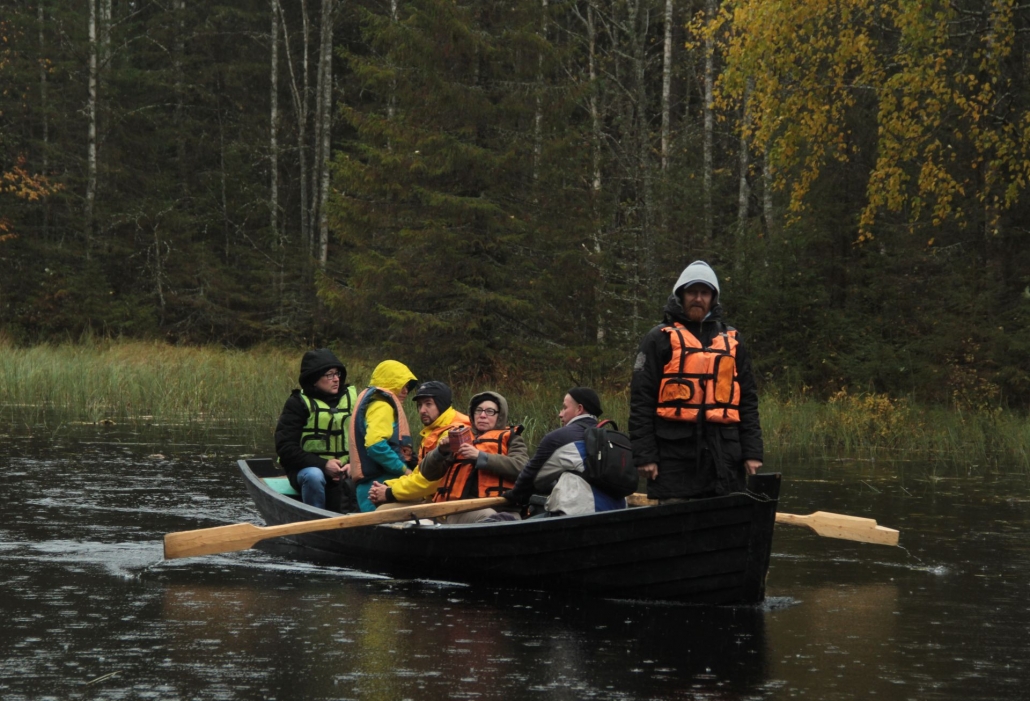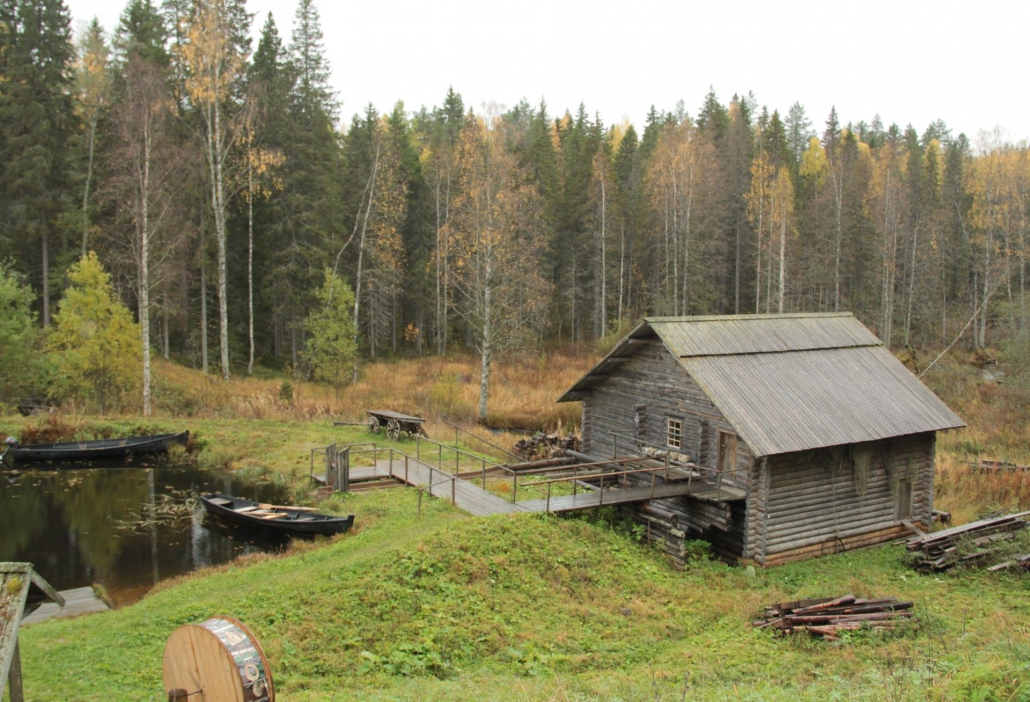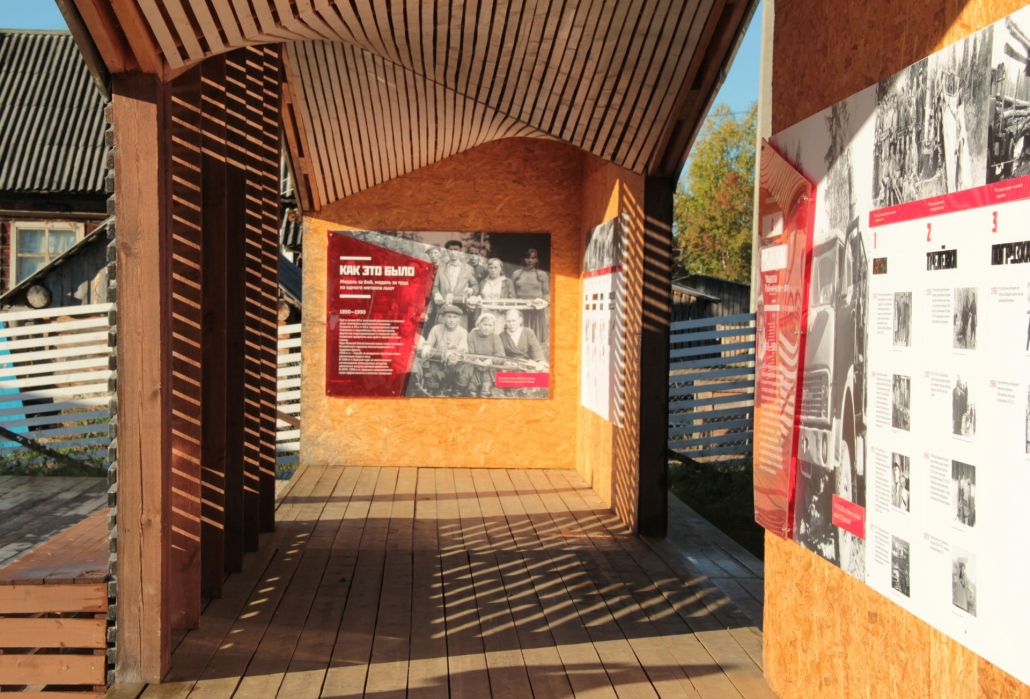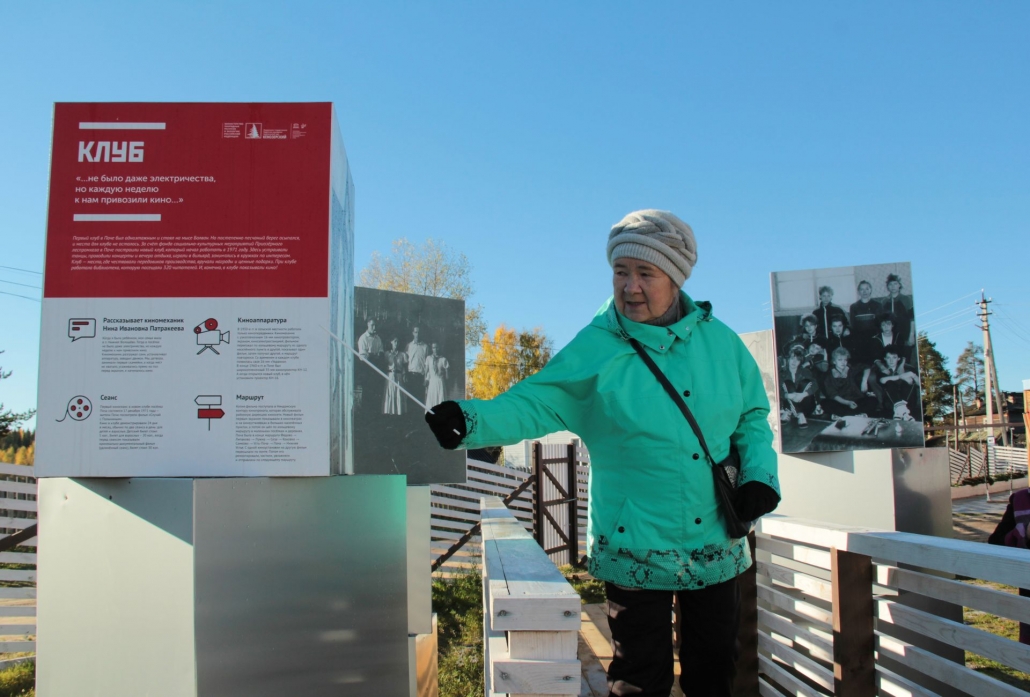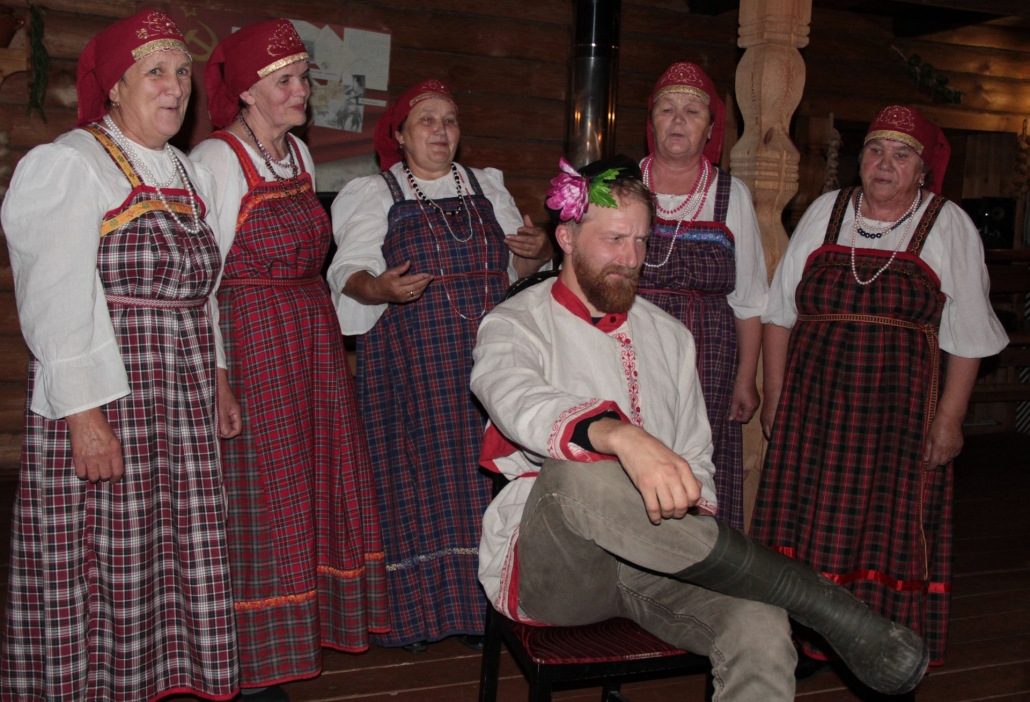A public discussion was held in the Komi Culture Center, Syktyvkar, on 26 October 2018. The discussion entitled ‘Role of Local Communities in Sustaining the Atlantic Salmon Population in the Mezen River’ was attended by representatives of the Working Group of the Model River Mezen project implemented by the Silver Taiga Foundation for Sustainable Development, and guest experts in fishery and fish breeding from the Komi Republic, Arkhangelsk and Murmansk regions. The course of the discussion urged the participants to search answers for a great number of questions having emerged during the project. The three core questions were “What reasons prevent natural reproduction of the Atlantic Salmon in the Mezen?”; “Artificial Reproduction of the Atlantic Salmon – For or Against?”; “What is the Role of Local Communities in Sustaining the Mezen Salmon?” It turned out to be quite a difficult task to put the things right.
Amphibias, hydraulic jets, airboats, hydroplanes and helicopters are all on salmon’s way
The talk starts with some facts. As Nikolay Shilov, Model River Mezen project coordinator said, no one knows exactly now what Mezen tributaries the Atlantic salmon visit and how many of them do it for spawning, as there is no systematic state monitoring at the moment. There is one thing you can say for sure – the population of the Mezen salmon goes down each year. The fact is supported by the exact data provided both by locals and experts.
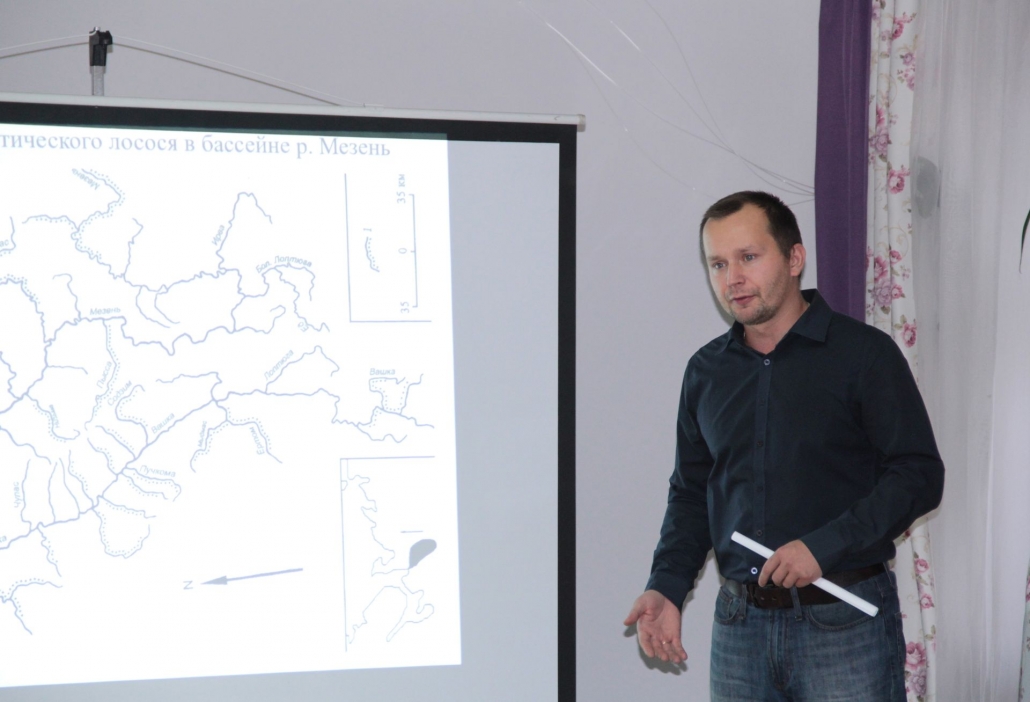
Nikolay Shilov, Model River Mezen project coordinator
It is common to believe that salmon started escaping the area in the 70s of the last century, when Bulgarian logging companies launched their operations in Udora district. But the researchers say that “the great depression” (reduced salmon catchment) began as long ago as in 1956, with the lowest point in 1992-1998, right after the perestroika. According to the famous Komi Republic ichthyologist V.G. Martynov’s estimations, before the depression the Mezen salmon population included 15-20 thousand individuals, while in the 2000s – from 0.6 to 1 thousand. In 1987, industrial catchment of salmon in the Mezen was suspended as a result of unprofitability. In the Komi Republic any catch of this fish is prohibited. According to the experts, catchment of the Mezen salmon reduced almost 70 times over the last 60 years – from 1,648 centners to a bit higher than 24. (According to the official data of the Federal State Fishery Agency “SevRybVod”, 24.6 centners of salmon were caught in Arkhangelsk region in 2016.
Valery Irkashev, representative of Murmansk region, head of the Murmansk Salmon Foundation, informed that illegal and uncontrolled tourist rafting activities damaged the Atlantic Salmon population at the spawning river Varzuga a lot. Each year up to 10 thousand tourists raft the river illegally. First, tourist groups of 10-15 people used canoes, but now hydraulic jets, airboats, amphibias, hydroplanes and helicopters are used to get people to the river. The peak of mass killings of the fish was in 2012-2014. As a result, the population of salmon in the Varzuga is almost extinct. Previously, schools of salmon reaching the Varzuga were as large as 100 thousand individuals, now their groups include from 1 to 10 thousand fishes. In addition to licensed amateur catchment the region allows industrial catch of fish (in the White Sea), however, the fishery companies suffer lower catchment volumes each year. According to Valery Irkashev, 40 years ago Murmansk region caught up to 1,000 tons of salmon per year, while last year the industrial catch was just 3.7 tons, with 26 tons allowed by quota, which means that industrial fishers caught just around 1,200 fishes. Based on the expert estimations, catchment of fish has reduced 270 times over the last 40 years.
Beavers against salmon?
“In the Komi Republic, local population believes that these are pontoon bridges, beaver dams and many other obstacles that do not allow the salmon to migrate for spawning there. The environment surely changes, but these are the least serious disturbances for the natural reproduction of salmon in the Mezen, to our minds,” Nikolay Shilov said.
According to him, depletion of fishery resources over the last 20-50 happened as a result of illegal fishing (wide use of fishing nets) caused by high unemployment rate and poverty among local people. A sharp decline of the Atlantic Salmon population is actually explained by overcatchment. As the Model River Mezen research proved, the volume of illegal catchment exceeds the legally allowed volume several times. Industrial wood harvesting and exploration of natural resources, which gave access to rivers for the general public, also had a negative impact.
“The main reason for the salmon population reduction is overexploitation, both legal and illegal. Salmon is depopulated intentionally and accidentally. We know some cases when people catch grayling with the use of chlorine (it is not a secret that such methods are also used), or with electric devices, so they make whole rifts, where young specimen of salmon live, uninhabitable. The adult, spawning population of salmon are not the only ones to suffer, sometimes youngsters are endangered as well,” Nikolay Shilov noted sadly.
Yury Shubin, representative of the Model River Mezen working group, also believes that poaching is the main reason for the reduced salmon population. “Spawners just cannot reach the spawning ground,” Yury Shupin says. Unlike Nikolay Shilov, he thinks that reduction of the Mezen salmon population was largely caused by changed natural and environmental factors over the last 20 years. “Owing to the global warming, hydraulogy, temperature and feed potential change. The changed conditions inhibit salmon youngsters growth,” Yury Shubin supposes.
“Poor supervision is the real problem,” Alexander Zakharov heading the group of ichthyology and hydrobiology in the zooecology department, the Institute of Biology of the Komi Scientific Center, Ural Branch of the Russian Academy of Sciences, says bitterly. “It is not only the Mezen problem, not the one of the Komi Republic only, the problem is relevant for the whole country. Now we are finishing the sturgeon stock, but years ago Russia used to have a huge stock of sturgeon. Weak fishery supervision is everywhere in Russia, not in Komi only. Reinforcement of supervision is the government’s task which was failed.”
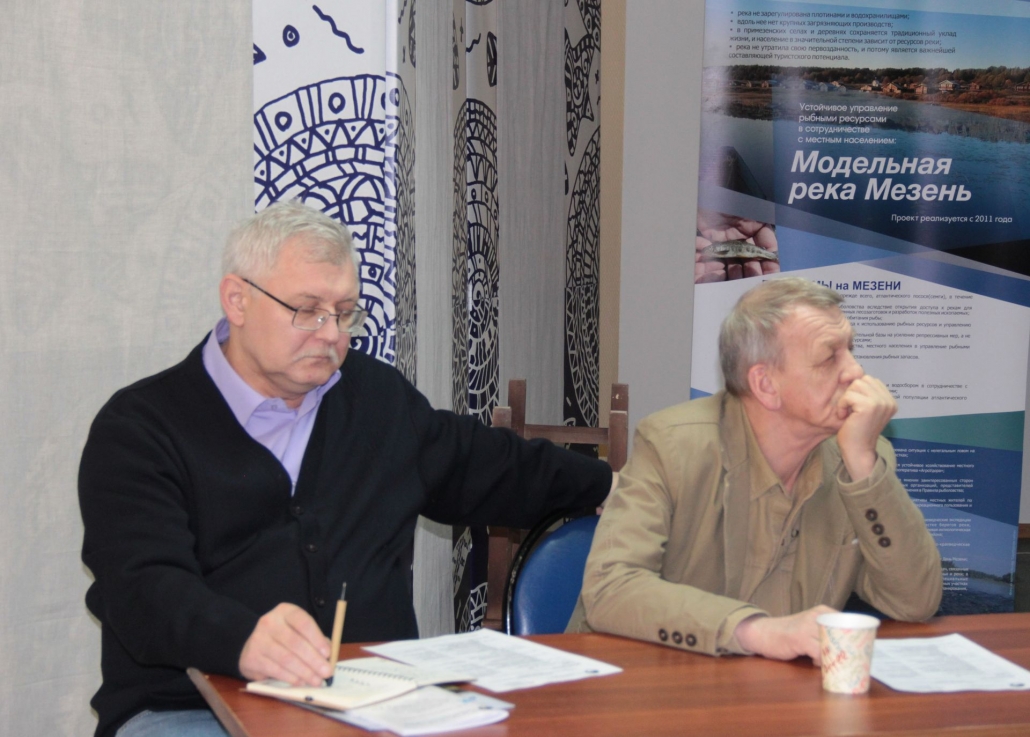
Experts Yury Shubin and Alexander Zakharov
“It seems like we are fighting windmills!”
Will artificial salmon reproduction become a panacea? The Komi Republic has no such experience at the moment, but, as was reported by Valery Irkashev, Murmansk region makes such attempts to artificially replenish fish stock in some rivers, in particular, the Umba river. Murmansk region has 3 fish plants releasing salmon species into rivers. Last year, about one million of youngsters were released into the Umba. The cost of each baby fish was 200 rubles.
It is difficult to count exactly how many youngsters return for spawning, because young fishes are not marked before release. Around 90% are taken by poachers, and less than 1,000 spawners come back to the Umba. Owing to reinforced protection this year (even border police were engaged) more than 3,000 spawners have returned. “It’s a great achievement for the last 20 years,” Valery Irkashev proudly noted.
Artificial reproduction is implemented in Murmansk region through the Protect the Varzuga project expected to last for 6 years. The project is funded by the Barents Branch of the WWF.
As Valery Irkashev reported, it all started in 2014, when local residents wrote a letter to the Murmansk Region Duma (state assembly). The request stated that the salmon population in the Varzuga is endangered, while salmon catchment is the core of sustenance for the Pomorye people. After that, about 10 big meetings were conducted in the region, which resulted in creation of a working committee on salmon preservation in the Varzuga. Consequently, a comprehensive program was developed following the order of the governor.
According to the head of the Murmansk Salmon Foundation, in some minor rivers populations are completely depleted, so there is no chance for natural reproduction. But he is sure that an individual approach is necessary for every case. You need to create working committees, fulfil projects, examine the areas, and if the examination shows that the area is empty, implement artificial stock replenishment. “Well, of course, natural reproduction is 10 times more efficient than the artificial one. What are fish breeding plants? Construction of such a plant is our inability to ensure natural spawning. To replace the natural process by an artificial one you need hundreds, even thousands fish breeding plants. However, if we fail to ensure the natural process, we have to help through artificial stock replenishment, but we need to use certain advanced biomethods for fish breeding. It is necessary to use the experience of our foreign colleagues who have developed a lot of fish stock replenishment methods. In some cases it is enough to use smaller modular stations,” Valery Irkashev assures.
Artificial reproduction is especially needed in the rivers with densely populated banks. “Even scientists supporting natural reproduction say that such rivers as the Kola and Umba need to be stocked with fish artificially. People residing along the banks of these rivers suffer from unemployment. The only way to survive for the locals is to catch some fish in the river. Preservation actions are difficult to be implemented there. When you go along the Kola, you remove the nets installed, but if you look back, you see people putting nets again. It looks like fighting windmills. So, the only method to maintain the fish population is to operate a fish breeding plant on the Umba,” the head of the Murmansk Salmon Foundation says.
Introduction may lead to salmon gene pool erosion
The expert Yury Shubin thinks that artificial reproduction is necessary, because it is not only about the fish population reduction, but also about the destruction of spatial structure of rivers. “In our region the situation is different, our rivers have a lot of tributaries, and when previously experts noted distribution of spawning grounds along the main channel and tributaries, today spawning area is disseminated. Fish cultural activities may of course lead to gene pool erosion, but it is the best of a bad bunch,” the expert believes.
The ichthyologist Alexander Zakharov admits artificial reproduction possible, but he is quite pessimistic about this method. “Biotechnology, starting from obtaining spawners to keeping them, has not been tested well yet. We don’t know how it will affect the gene pool,” the scientist doubts.
Vladimir Maltsev, head of the Komi branch of the Federal Fishery Agency (GlavRybVod) totally disagrees. He states that Komi has specialists who are ready to adopt foreign experience and master the most up-to-date technology for stocking with fish and conduct tests. “There is no need today to discuss if fish breeding plants are necessary. Expressly yes. Places with no fish must be stocked with artificially bred youngsters. These are not only areas in the Mezen, but also in the upper reaches of the Pechora, the Ilych and tributaries of the Shchugor that need stock replenishment,” the head of the Komi branch of GlavRybVod argues heatedly.
He is decisively for “closing” such rivers as the Vym, Mezen and Pechora. “We won’t die of hunger”, Vladimir Maltsev states. “And the effect will be huge. Of course, supervision and control will be required.”
The head of the Komi branch of GlavRybVod informed that the documentation for the fish breeding plant construction in the Komi Republic is at the approval stage. It is expected that young fishes will be released everywhere in the region. The first batch of 500-700 thousand young graylings has been already released. Babies of cisco, omul and nelma are also planned for breeding and releasing. The AgroUdora cooperative in Udora district has tested the technology for pike reproduction. As the cooperative foreman Gennady Politov assures, pikes are already spawning. “We can already see some result. The pike swims in Krivushev-Ty lake like in an aquarium, they are all the same. It’s a great achievement for me,” Vladimir Maltsev cannot hide his emotions.
Prevent epidemics
Actually, artificial reproduction is not that promising, as it is shown by the head of the Komi branch of GlavRybVod. The topic was closed by Nikolay Shilov, Model River Mezen project coordinator, “When we meet Udora residents, we often hear ‘That’s the stream where salmon used to spawn, but not it doesn’t even come’. To restore micropopulations of salmon, which come to minor brooks, artificial reproduction is in fact something that is relevant. But unless there is control on the river, there will be no result irrespective of how many youngsters will be released, even though the locals insist on fish stocking. Everybody understands why they do it. Around 90 percent of the fish released will be harshly caught by local fishermen. There are other fish stocking methods as well. If you keep men away from rivers, salmon will return to minor rivers sooner or later. There are two-three percent of ‘explorers’ who will anyway enter new rivers and streams to inhabit the place, and we need to support the process, even though it is a very lengthy one.”
In addition, Nikolay Shilov gave some examples of negative effect of artificial fish stock replenishment. In some cases, both in Russia and abroad, artificially bred youngsters were infected with parasites, and after their release whole populations died. Huge resources were consumed to restore the schools of fish. Water reservoirs had to be decontaminated through complete eradication of all living organisms and further stocking with clean artificially bred individuals of the species eradicated. European and American experience supports the need to focus on natural mechanisms of salmon reproduction.
The problem of procuring and selecting spawners is one of the most challenging in artificial fish stocking. As Valery Irkashev said, there are fish stock replenishment methods with the help of smaller incubator redds, which do not need a lot of spawners – just 10 specimen will be enough. However, the efficiency of artificial incubator redds is 3-4 times higher than the one of natural redds. And the costs are minimal. Such low-cost methods are optimal for Russian conditions.
Role of local communities – positive or negative?
Good examples of local communities’ participation in maintaining Atlantic Salmon populations were reported by Valery Irkashev. Public fish protection was arranged under the Protect the Varzuga project in Murmansk region.
About 1 thousand people live in Varzuga. One third works at a local fishery firm, which offers amateur and sport fishing. The company also organizes preservation of fishery plots. And as soon as the Protect the Varzuga project was launched, it started conducting raids jointly with representatives of the community and supervisory authorities.
The whole district Tersky with the area of 2 million hectares has only 4 fishery inspectors. The area has over 40 bigger and smaller rivers. It is obvious that it is not possible for 4 men to supervise the whole area. That is why policemen, PA inspectors and public inspectors from the community are also part of anti-poaching teams, together with fishery inspectors. They patrol the river during the open water season right in spawning areas. Raid groups (from 4 to 10 people) spend 60 days on the river during open water. Extra monitoring is performed by anti-poaching groups from 20 May to 30 June, when tourist raft the Varzuga in large quantities.
“Previously, there was no poaching on these rivers. The population residing at the lower reaches followed a sacred rule – never touch fish heading for spawning. Over 600 years Pomors managed fishery resources at the Varzuga, and it was all fine. But over the last 30-40 years the development of technology and communications has led to manifold increase of amateur fishing, so the stock is getting depleted,” Valery Irkashev says.
Now, the Murmansk Salmon Foundation activists try to change the mentality of the locals and bring the old thinking, similar to the one when 100 years ago people though fish was theirs, back. The project facilitators believe that salmon will be used not just for eating. Today, many villages revive owing to tourism. And fish is the most attractive food for tourists. Tourists usually come to see the restored monuments, of course. But each of them would like to try a traditional fish soup in the evening. “The preserved fish stock will help Pomorye villages revive,” Valery Irkashev is sure.
Is poaching a human genetic disease?
Representatives of the Komi Republic are not that enthusiastic about participation of the locals in patrolling rivers. Natalya Vurdova from the Center of PA of the Komi Republic, having a long history of working as a fishery inspector in Udora district, ensures that these are mostly locals who poach in the Mezen. “5 years ago there were a lot of tourists on the river, but now you can hardly find any. Why? Because their expenditures never pay back. While the locals never go back home from the upper reaches of the river until they fill their 35-liter barrels with salmon,” Natalya Vurdova states.
Experts Alexander Zakharov and Yury Shubin also believe that local communities play a negative role rather than a positive one in maintaining the salmon population.
“I think, education of the new generation, enlightenment activities will provide a much better effect, than attempts to engage local population to supervisory actions which are to be fulfilled by the state,” Yury Shubin comments laconically.
Alexander Ermakov, director of the Center of PA of the Komi Republic, is positive about revival of the public inspector institute in Russia. “Unfortunately, their legal capabilities are quite limited. They serve as identifying witnesses only,” Alexander Ermakov said straight.
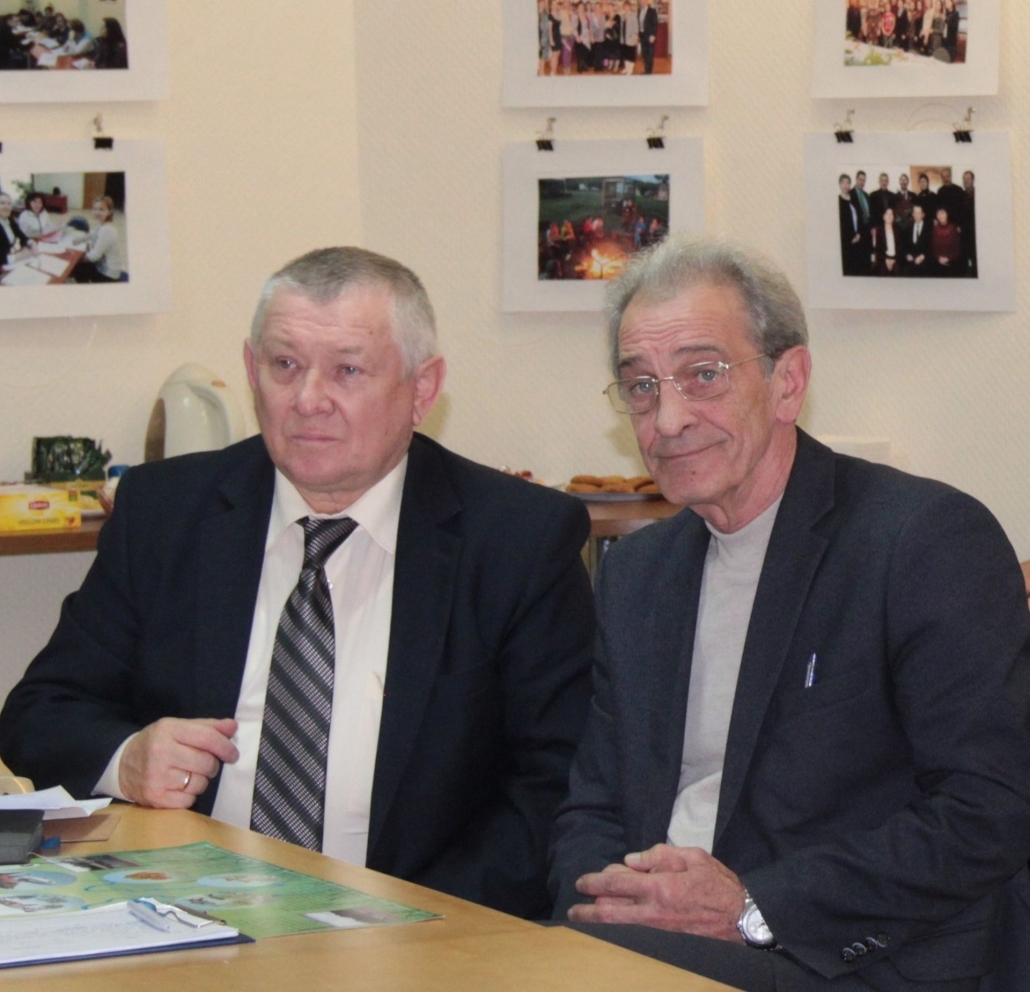
Participants of the discussion – Vladimir Maltsev and Alexander Ermakov
Nevertheless, he called for joining efforts to enhance the efficiency of control and supervisory activities and not to ignore public inspectors. The Center of PA knows some candidates for the position of public inspectors, who will be soon issued their ID documents after certification.
There won’t be a lot of such public inspectors, according to Alexander Ermakov. Most representatives of local communities prefer not getting involved in this initiative following the principle that informing on your neighbor is not good. The Murmansk representative Valery Irkashev admitted that in his region people are not willing much to participate in patrolling the aquatic area of the river. “We are trying to change their position through creating a community, we will organize territorial self-governments in village with the help of the state, such self-governments will deal, in particular, with environmental protection as well. We want to make people restore their confidence again that they can manage their resources. Territorial self-governments will shape public opinion that a person helping the fishery protection service is not a betrayer, but the one who serves the community through preservation and restoration of fish stock,” Valery Irkashev shares his plans.
Albert Loginov, who heads the Indigenous Peoples Community Udorachi said that he would agree to participate in such raids, if he were offered it. And if it ever happens, he will work for making those legal requirements implemented which he considers fair. “Today, amateur fishing by drift-nets is allowed at fishery plots at mid and lower reaches of the Mezen. It’s nonsense. In the upper reaches of the Mezen people also catch fish with drift-nets, as they observe their neighbours. Not a single fish will remain in this case”, Albert Loginov expresses his indignation.
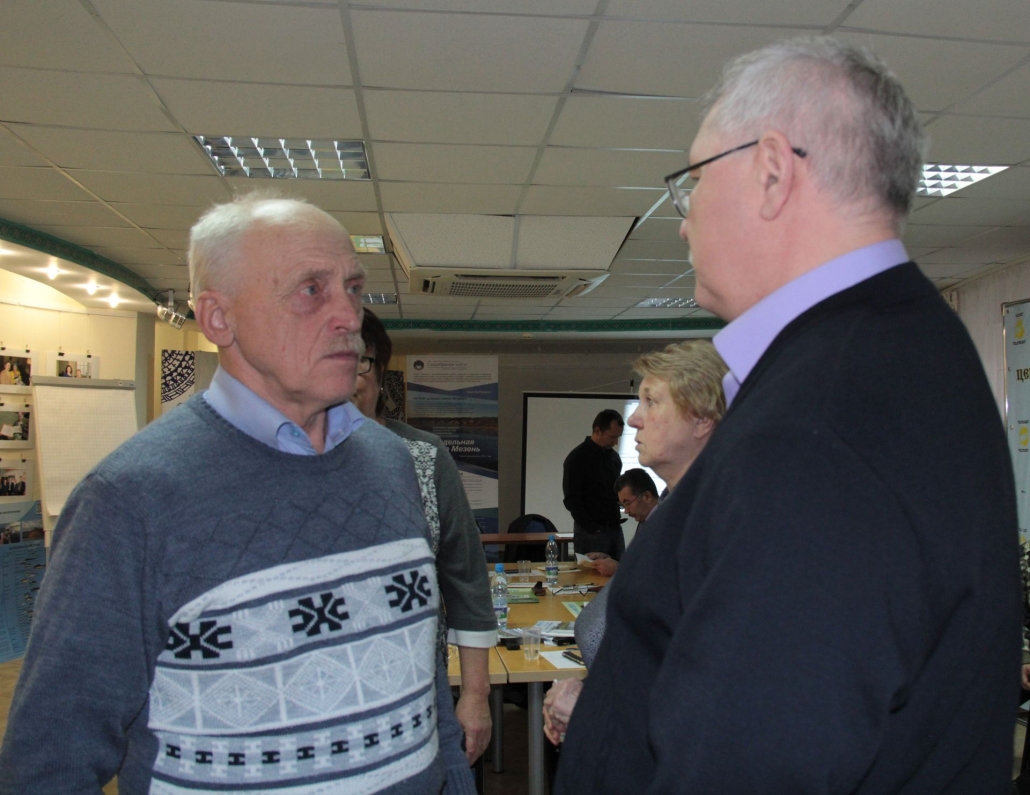
Albert Loginov, head of the Indigenous Peoples Community Udorachi
Member of the Model River Mezen project working group Sergey Tsogov thinks that public inspectors will be useful only if they will be transferred from one district to another, for example, from Izhma to Ust-Tsilma, and vice versa, that means in case of cross patrolling. Sergey Tsogov is confident about it based on his 30-year experience in the fishery protection sphere. But according to him, you cannot eradicate poaching completely.
“It’s a genetic disease!” Sergey Tsogov exclaims. “In the Soviet era Komi had powerful groups consisting of fishery protection inspectors, militiamen, state inspectors of small vehicles, community activists, prosecutors and hunting supervision experts. From June to October, during months of autumn- and spring-spawning fish protection, 40-60 people from supervisory authorities moved on 4-5 large motor boats along the Pechora from the Nenets Autonomous Okrug to Vuktyl, escorting schools of fish. Up to 1,000 records used to be made, up to 3-4 tons of fish used to be confiscated, but people still violated the law. I talked to poachers arrested, and they couldn’t explain why they risked so much. They were simply charmed by flocks of fish. “You should have seen how she moved!” They called salmon as a she! How can you explain it?”
Hit them in the pocket
After the lyrical pause the participants of the discussion started offering tougher punishment. The most radical solution was suggested by Alexander Zakharov who claimed a fine of 20 thousand euros, 4 months of compulsory labour, and confiscation of the equipment.
Valery Irkashev believes that the fine for an illegally caught individual of salmon should be at least 100 thousand rubles. Now, the amount is just 1,250 rubles. “According to the acting legislation, depending on the damage, administrative penalty turns into a criminal one. But it is not about punishing, but reimbursing the damage. The cost value of one salmon during artificial reproduction is actually 100 thousand rubles. It is the price for the salmon to get back to the river. The salmon weighing 10 kilos costs 10 thousand rubles at the market, while a poacher pays just 1,250 rubles. The compensation is far from being fair. We are fighting addressing various legislative and executive authorities, but cannot prove our right yet.”
Having set all the issues straight, the discussion participants came to the conclusion that stakeholders of all three neighbouring regions participating in the talks need to join their efforts and exchange their experience more frequently.
Unfortunately, as Silver Taiga Foundation’s director Yury Pautov noted at the end of the meeting, it was only the Silver Taiga Foundation which worked on development of the Interregional program for the Mezen salmon preservation and reproduction. “Hopefully, other organizations will join us as well,” Yury Pautov summed up.
The discussion resulted in the decision to address the administrations of the Komi Republic and Arkhangelsk region with a statement saying that high-quality monitoring and preservation of salmon are only possible under the condition of interregional and interdepartmental cooperation and openness of all data obtained. The discussion participants submitted their requests to the Governments of Arkhangelsk region and the Komi Republic on support of the developed interregional program and provision of feasible state co-funding.
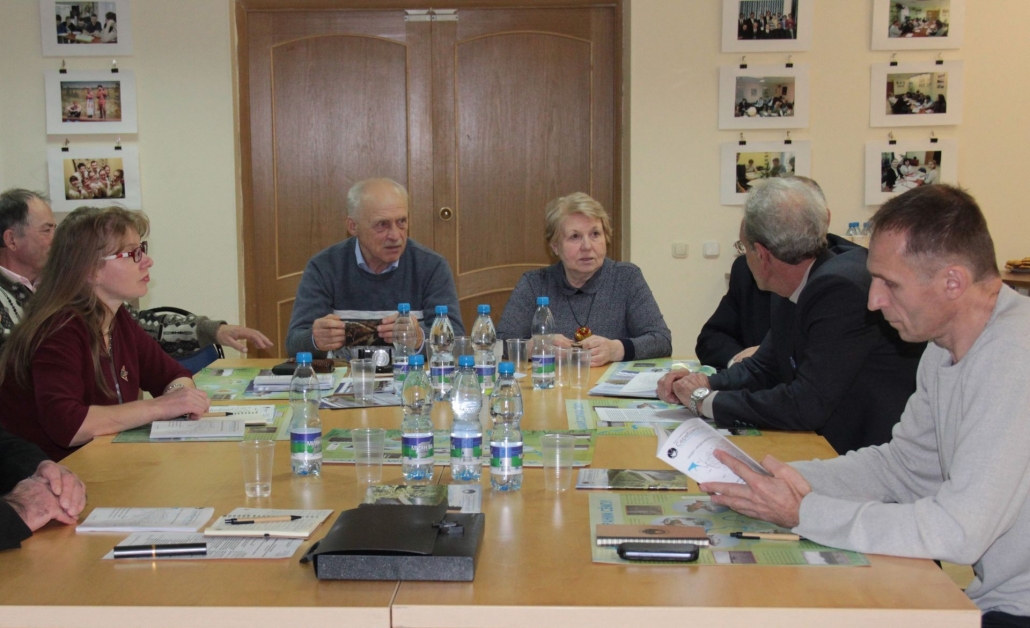
At the discussion
The discussion was part of the Barents-Baltic “Nature and Man” Program supported by the World Wildlife Fund (WWF).

